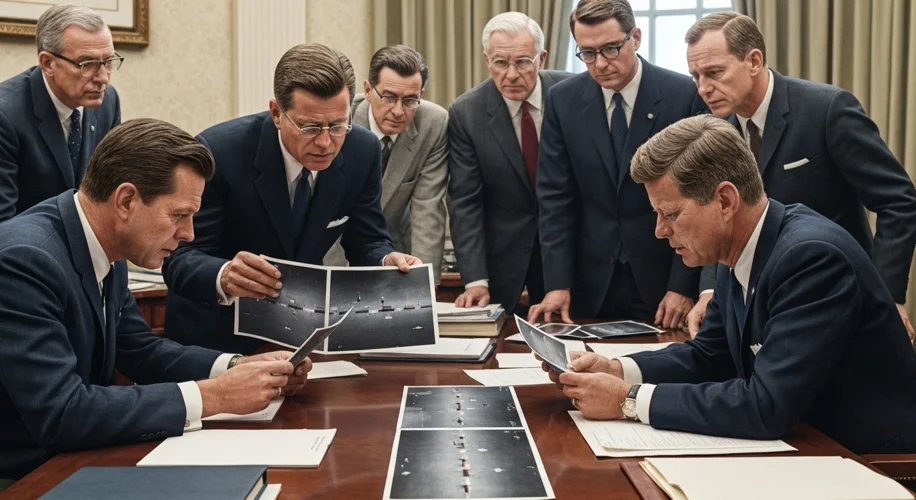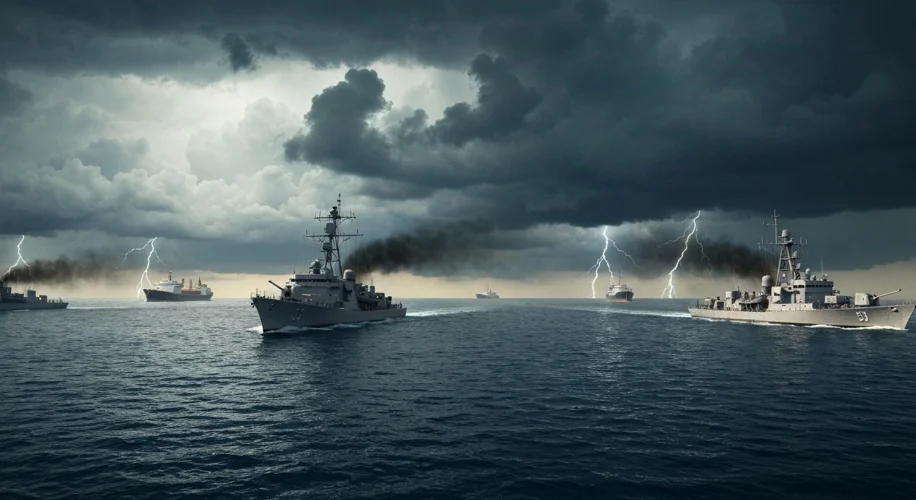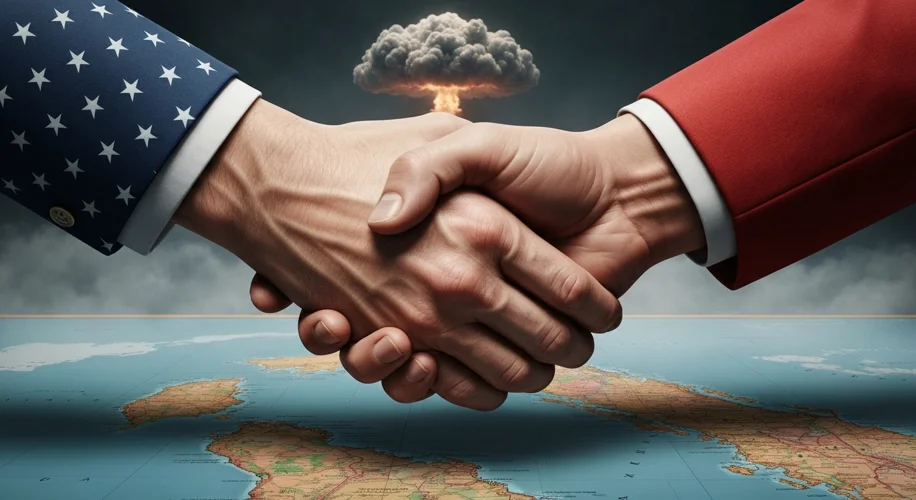The year is 1962. The world holds its breath, teetering on the precipice of nuclear annihilation. For thirteen harrowing days, two superpowers, the United States and the Soviet Union, engaged in a dance of brinkmanship that brought humanity closer to the abyss than ever before. This was the Cuban Missile Crisis, a confrontation so tense it etched itself into the collective memory as the moment the Cold War nearly turned red-hot.
The backdrop to this terrifying standoff was the volatile political climate of the Cold War. The ideological chasm between the capitalist West, led by the US, and the communist East, dominated by the USSR, had fueled decades of proxy wars, arms races, and a pervasive atmosphere of mutual suspicion. Cuba, a mere 90 miles off the coast of Florida, had recently undergone a revolution, led by Fidel Castro, which brought it firmly into the Soviet sphere of influence. This was a bitter pill for the United States to swallow, especially after the failed Bay of Pigs invasion in 1961, an attempt to overthrow Castro’s government.
From the Soviet perspective, placing nuclear missiles in Cuba served multiple strategic purposes. Firstly, it was a deterrent against any further US attempts to invade Cuba. Secondly, it was a strategic countermove to the presence of American Jupiter missiles stationed in Turkey, which were within striking distance of Soviet territory. For Soviet Premier Nikita Khrushchev, it was a bold, some might say reckless, gamble to rebalance the nuclear scales and demonstrate Soviet resolve on the global stage.
On the morning of October 16, 1962, U-2 spy planes, soaring high above Cuba, captured photographic evidence that would send shockwaves through Washington D.C. The images revealed the unmistakable outlines of Soviet medium-range and intermediate-range ballistic missile sites under construction on the island. President John F. Kennedy was presented with this stark reality, and the weight of the world’s fate suddenly rested on his shoulders. The discovery triggered an intense 13-day period of intense debate, secret negotiations, and unprecedented public anxiety.

Kennedy and his advisors, forming what was known as ExComm (Executive Committee of the National Security Council), grappled with a terrible choice. Military advisors largely favored an air strike to destroy the missile sites, followed by a potential invasion. However, the terrifying prospect of Soviet retaliation, possibly with nuclear weapons, loomed large. Others advocated for a naval blockade, a more measured response to prevent further missiles from arriving.
The days that followed were a blur of strategic maneuvering and nail-biting tension. On October 22nd, Kennedy addressed the nation, revealing the existence of the missiles and announcing a naval “quarantine” (a blockade, but the term quarantine was used to avoid the appearance of an act of war) around Cuba. Soviet ships en route to Cuba, carrying more military supplies, were now sailing towards a potential confrontation with the US Navy. The world watched, eyes glued to flickering television screens and radios, anticipating the moment when the two titans might collide.

The crisis reached its zenith on October 27th, dubbed “Black Saturday.” A U-2 reconnaissance plane was shot down over Cuba, killing the pilot, Major Rudolf Anderson Jr. Simultaneously, a Soviet submarine, cornered by US naval forces, nearly launched a nuclear torpedo, a catastrophic decision averted by one dissenting officer. Back in Washington, the pressure for immediate military action was immense.
In the tense atmosphere of these thirteen days, back-channel communication played a crucial role. Robert Kennedy, the President’s brother and Attorney General, engaged in secret talks with Soviet Ambassador Anatoly Dobrynin. These clandestine discussions, often taking place late at night, were instrumental in finding a path toward de-escalation. The resolution involved a public agreement: the Soviets would remove their missiles from Cuba, and the US would pledge not to invade the island. Secretly, the US also agreed to remove its Jupiter missiles from Turkey, a concession that, while not publicly acknowledged at the time, was vital to the Soviets.

The immediate aftermath of the Cuban Missile Crisis saw a collective sigh of relief, but the impact resonated for years to come. It served as a stark, terrifying lesson in the dangers of nuclear brinkmanship. Both superpowers recognized the urgent need for better communication and arms control. The Moscow–Washington hotline, a direct communication link between the leaders of the two nations, was established shortly after the crisis, a tangible symbol of the lessons learned.
The crisis also solidified the idea of Mutually Assured Destruction (MAD), the understanding that a nuclear war would lead to the annihilation of both sides, acting as a powerful, albeit terrifying, deterrent. For Cuba, the crisis meant continued Soviet protection but also a precarious existence under the shadow of American hostility. For President Kennedy, it was a defining moment of his presidency, showcasing a blend of strength and restraint. For Khrushchev, it was a strategic victory in terms of safeguarding Cuba, but a political blow that contributed to his eventual ousting from power in 1964.
The Cuban Missile Crisis stands as a testament to the fragility of peace in the nuclear age and the immense responsibility borne by leaders in times of crisis. It reminds us that even in the darkest hours, diplomacy, communication, and a willingness to compromise can steer the world away from the brink. The echoes of those thirteen days in October 1962 continue to resonate, a solemn reminder of how close we came, and a powerful lesson for navigating the complex geopolitical landscapes of today.

